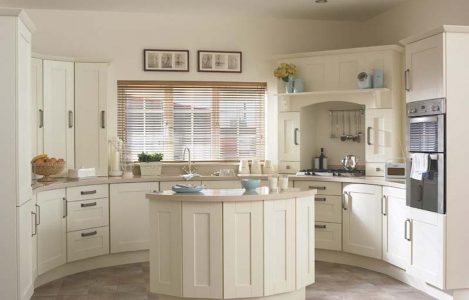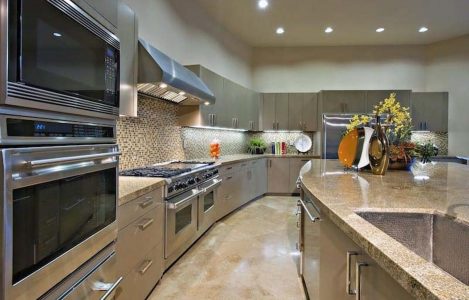The smells and aromas that come from the kitchen can often be delicious whiffs and wafts of joy that call us for our food but some kitchen smells are more appealing than others. And this is when the humble kitchen extractor fans comes into play. Of course, the smell of lovingly prepared meals can be a real delight to the senses but, as more and more homeowners are creating open plan living space and as more and more soft furnishings make their way into the kitchen, you will ideally want to get rid of some odours as quickly as possible before the smells set into your sofas and cushions.
You don’t need to install a fully fitted kitchen to have the benefit of an extractor fan, as there are a number of stand alone options available that can be quickly and easily fitted into most homes. There are a large numbers of styles and designs too, so how do you know which kitchen extractor fan system is right for you?
Extraction Method:
Primarily there are two types of kitchen extractor fans; ducted extractors and recirculation extractors. Ducted extractors are by far and away the most efficient and effective type of kitchen extraction units. These installations require access to an exterior wall in order for the system to completely remove odd odours from the building altogether by sucking them straight outside.
The second option is to install a recirculation extractor, which is a system that takes air and passes it through a filter before sending it back into the kitchen. This option of extraction works well in kitchens that have limited access to external walls but the downside to them is that the filters will need cleaning or replacing every few months.
Budget:
Like any serious investment in your home, you should decide on an affordable budget before you make any big decisions. Kitchen extraction units range in price hugely, with budget options starting in price from £100 or so but with prices climbing into the thousands for advanced extraction systems. Assess the actual extraction capacity requirements and research the kinds of systems on the market before going ahead. At this point it is also highly recommended that you consult a reputable fitted kitchen installer to make sure you have thought of all eventualities and to ensure that you have a realistic budget. Once you know what is involved and how much you have to spend, it’s time to choose a hood.
Hood Styles:
These days the world is your oyster when it comes to choosing kitchen fixtures and fittings and extractor fans are no different. Traditionally there were two kinds of kitchen extractor fan hoods available; chimney hoods and canopy hoods, which were available in a variety of finishes and styles. However, as modern fitted kitchens have evolved, so have extractor hoods. You can now choose from many different extractor hood types, which include downdraught extractors, ceiling mounted extractors (ideal for over island arrangements) and even hobs that have in-built extraction. This means that no matter what the layout, theme and style of your kitchen, there’s an extractor hood to suit.
Noise:
While the kitchen may not be the most serene and quite of rooms in the house while you’re cooking, you don’t want to be deafened by a noisy kitchen extractor fan. All leading models of extraction units will come with a dB (decibel) rating which indicates how loud or quiet a unit will be. As a rule, the more suction that a system produces and the faster that fans turn, the more noise that will be generated. This is where the more expensive extractor fans come into their own. High quality installations that have been planned correctly can often be almost silent when operating. Our advice would be to ask for a demonstration of a system before committing to buy, which should allow you to pick the perfect kitchen extractor fan for your home.




